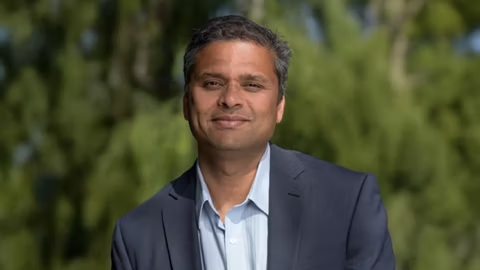In a bold move to reshape the future of Intel Corporation, newly appointed Chief Executive Officer Lip-Bu Tan has initiated a sweeping leadership restructuring aimed at accelerating innovation and streamlining decision-making at the semiconductor giant.
One of the most significant changes includes the elevation of Sachin Katti as Intel’s new Chief Technology Officer (CTO) and Chief AI Officer, positioning him at the helm of the company’s technological transformation.
The announcement marks a pivotal moment for Intel as it redefines its strategy to remain competitive in the rapidly evolving AI and semiconductor landscape. The restructuring efforts come amidst growing market pressure and intensifying geopolitical complexities.
Katti to Lead AI and Technology at Intel
Katti’s appointment comes as part of Tan’s effort to flatten Intel’s management structure, allowing technical leaders greater access to executive leadership.
Katti, who has been leading Intel’s networking and edge computing business, will now assume dual responsibilities, overseeing the company’s overall AI strategy, product roadmap, and fundamental research through Intel Labs.
“Sachin Katti is expanding his role to include chief technology and AI officer for Intel,” a company spokesperson confirmed. “He will lead our overall AI strategy and AI product roadmap, as well as Intel Labs and our relationship with the startup and developer ecosystems.”
Katti’s expanded role will unify critical R&D areas, placing him in charge of applied research, AI development, process technologies, and Intel’s outreach to innovators.
His leadership is expected to drive Intel’s long-term innovation goals while addressing the shortcomings of Intel’s previous AI efforts, which had been relegated to the data center division and often lacked executive attention.
Leadership Restructuring: Empowering Technical Voices
Lip-Bu Tan’s leadership overhaul introduces a flatter organizational model, with direct communication channels between key technical leaders and the CEO. Among those reporting directly to Tan are:
Rob Bruckner, CTO of Client Platform Architecture and Definition, is overseeing the high-revenue Client Computing Group.
Mike Hurley, General Manager of the Client Silicon Engineering Group, is responsible for the end-to-end execution of client silicon products.
Lisa Pearce, General Manager of GPU and NPU hardware and software IP, plays a crucial role in AI hardware strategy.
Previously, these executives reported to Michelle Johnston Holthaus, head of the Intel Products Group.
While Holthaus remains a central figure at Intel, Tan’s direct involvement signals a more hands-on leadership style focused on execution and technical excellence.
“I want to roll up my sleeves with the engineering and product teams so I can learn what is needed to strengthen our solutions,” Tan said in an internal note, as reported by Reuters. “As Michelle and I drive this work, we plan to evolve and expand her role with more details to come in the future.”

Refining the CTO Role: From Traditional Oversight to Strategic Vision
The CTO position at Intel has historically played a key role in driving semiconductor innovation. Legendary leaders like Pat Gelsinger and Justin Rattner shaped Intel’s technology roadmap in the early 2000s.
However, the position remained unfilled between 2013 and 2017, reflecting changing organizational priorities.
Katti now inherits this legacy with added responsibilities. His tenure follows Greg Lavender, Intel’s previous CTO, who joined in 2021 and focused heavily on software, confidential computing, and AI-related innovation.
Katti’s appointment reflects Intel’s shift toward tighter integration between AI, research, and hardware design.
AI Strategy Finally Takes Center Stage
Intel’s AI strategy has long lagged behind competitors like NVIDIA and AMD, in part due to its fragmented organizational approach.
With AI leadership now consolidated under Katti, Intel aims to drive focused innovation in chips tailored for artificial intelligence workloads, from cloud to edge computing.
The decision to unify CTO and AI leadership roles is seen as a strategic bet by Tan, aimed at ensuring a cohesive vision and faster execution across critical technology fronts.
Government Affairs Restructured Amid Global Pressures
In another notable change, Intel’s head of government affairs will now report directly to the CEO.
This move underscores the growing importance of regulatory alignment and strategic diplomacy, especially as U.S.-China tech tensions and export controls continue to impact the semiconductor industry.
Bruce Andrews, Intel’s former government affairs lead who served under the Obama administration, recently departed following the 2024 U.S. elections.
Conclusion: A Strategic Reset Underway
With Lip-Bu Tan at the helm, Intel is entering a new era of leadership designed to reclaim its innovation edge and global competitiveness.
The reshuffling signals a deep commitment to technical excellence, sharper focus on AI, and a leadership model that empowers experts to shape the future of computing.
As Sachin Katti assumes the dual mantle of CTO and AI chief, all eyes will be on Intel to see if this new structure delivers the agility, innovation, and results the company urgently needs.



